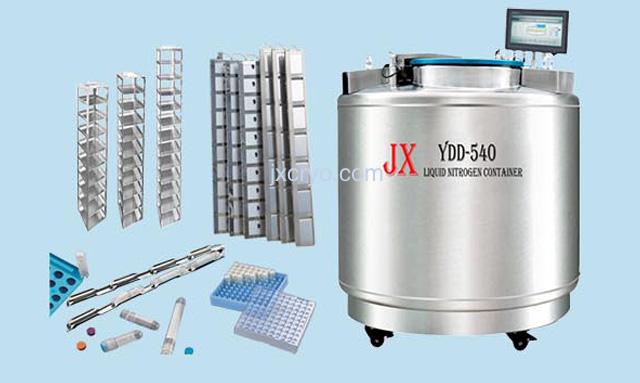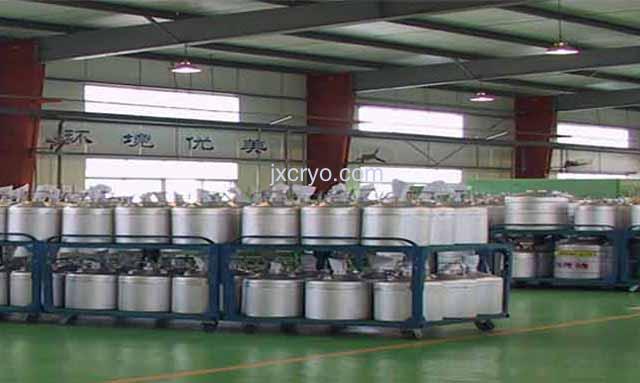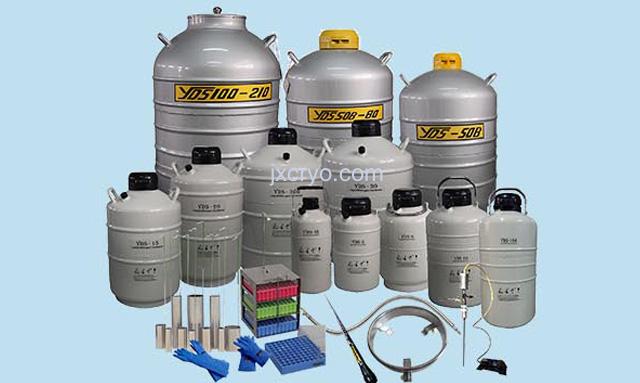Tel:+8617329375552News
RoThe image of liquid nitrogen has been glamorized recently in TV cookery programs by chefs such as Heston Blumenthal. However, whether you are going to use it to make home made ice-cream or to snap-freeze samples in the lab, liquid nitrogen is not something to fool around with.
Liquid nitrogen is extremely cold: it boils at -196ºC and freezes at -210 ºC. Contact with bare skin can result in cold burns and nasty injuries such as retinal detachment in a person’s eye. Liquid nitrogen can also cause common materials such as plastic, carbon steel, and rubber to fatigue and eventually fracture.
However. one of the most dangerous properties of liquid nitrogen is its capability to vaporize from liquid into a large volume of gas. Thus liquid nitrogen is associated with risks such as asphyxiation and explosions.
The following are some guidelines for using liquid nitrogen in the laboratory.
1. Get proper training
Make sure you get proper training on how to use liquid nitrogen, particularly when using it for the first time.
2. Know how to store and transport liquid nitrogen
The storage of liquid nitrogen containers is regulated. There are specific health and safety requirements that require good ventilation and limit the number of storage containers in one room. Make sure you are familiar with your institute’s policies.
For long term storage of liquid nitrogen, as well as storage of cell lines and biological specimens, use a Dewar or similar pressurized vessel. For aliquoting a smaller amount for use in a laboratory procedure, only use a container specified for liquid nitrogen. Do not use a domestic vacuum flask or any old container hanging around the lab. Un-insulated containers can stick to skin and tear it when removed. Unsuitable containers can also suddenly crack and spill liquid nitrogen everywhere.
3. Wear a lab coat, face shield and insulated gloves
When using liquid nitrogen you want to protect your skin, particularly your face, and also your eyes, from splashes. For added protection, you should also consider wearing goggles under a full face shield. I personally got splashed in the eye when organizing cryotubes in a Dewar, despite having a full face shield. The stuff can shoot up from all angles!
Although it can make gripping tubes difficult, make sure you use insulated gloves. A splash of liquid nitrogen may not cause your finger to fall off, but it can give you a nasty burn.
4. Work in a well-ventilated area
If liquid nitrogen is vented in a closed space it will vaporize and displace oxygen – even in your lungs, potentially causing asphyxia.
5. Do not work with liquid nitrogen when you are alone in the lab or after hours
When working with liquid nitrogen, particularly when dispensing from a large to a small container, make sure a colleague is nearby and is aware of what you are doing. The importance of this is highlighted in this BBC articlehttp://news.bbc.co.uk/2/hi/uk_news/scotland/798925.stm.
6. If possible, do not get in an elevator or confined space when transporting liquid nitrogen
If this can’t be avoided, don’t allow anyone else to ride in the elevator with you but make sure a colleague is aware of your task.
7. Don’t go diving into a storage container to retrieve a dropped sample
No sample is worth asphyxiating yourself from the vapors or burning your face and/or hands when the liquid bubbles up.
8. Never use liquid nitrogen in a closed container
Liquid nitrogen boils rapidly and can cause ice dams to form or pressure to build up, resulting in explosions. Make sure storage containers are properly vented and never use liquid nitrogen in a closed system.
9. Never put liquid nitrogen down the sink
It can cause the pipes to crack and you will end up with an expensive repair bill. Furthermore, liquid nitrogen poured down one drain can come up another, which could be a nasty surprise for a colleague in the lab next door.
10. Watch out for exploding cryotubes
Cryotubes should be safe for liquid nitrogen, right? Not always. Liquid nitrogen can unknowingly enter cryotubes through minute cracks and then expand quickly when the tube thaws. An exploding cryotube can be like a mini missile and a former colleague of mine has a mark on her forehead to prove it!
Liquid nitrogen is incredibly useful in laboratories but can also be a tad dangerous. Make sure you are a bit more on-guard as you go about your work in the lab, or at home!
Writen by Ellen Moran
Email:info@jxcryo.com
Address:Chenbao Industrial Park,Xinxiang City,Henan Province,China.






